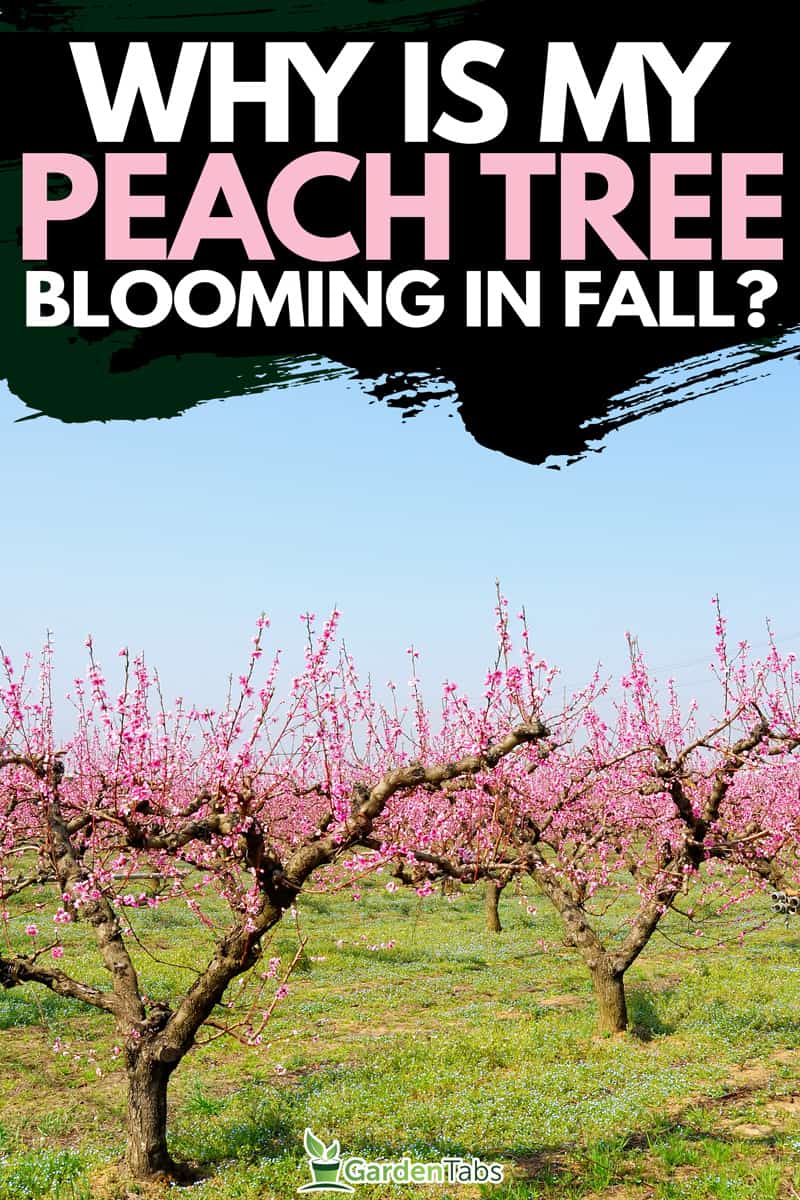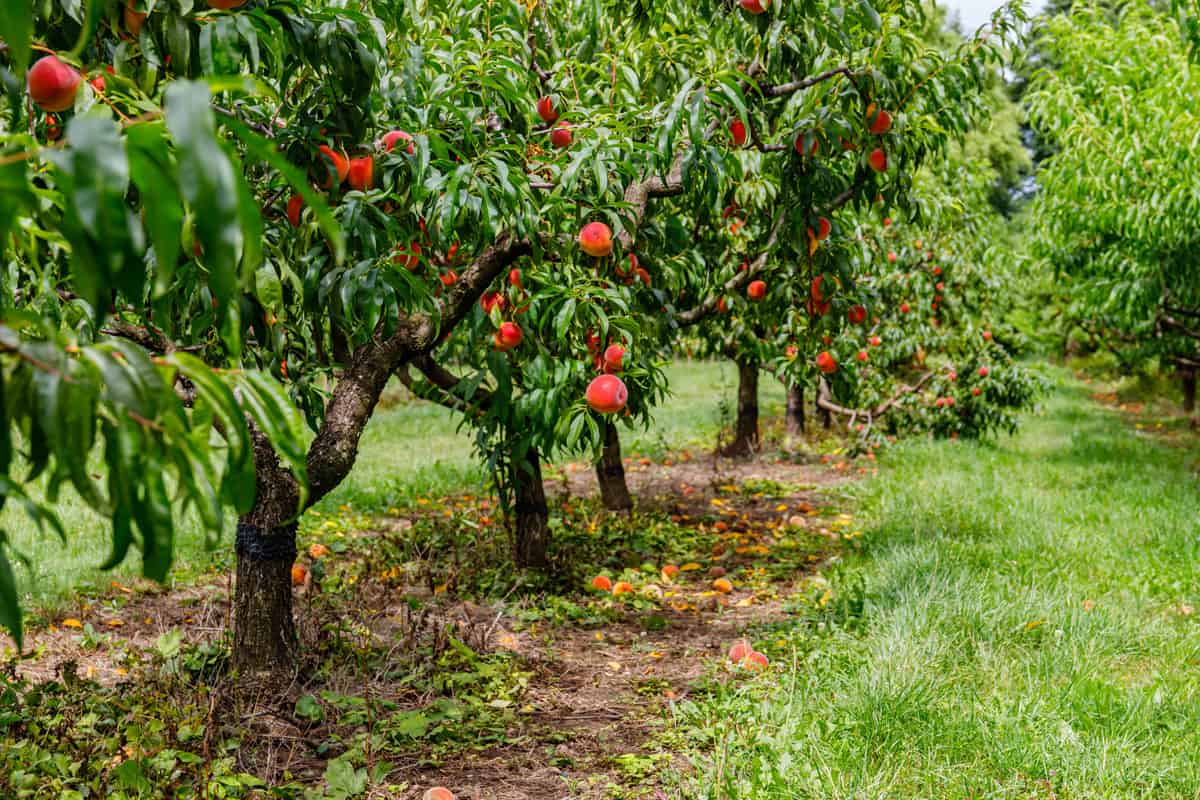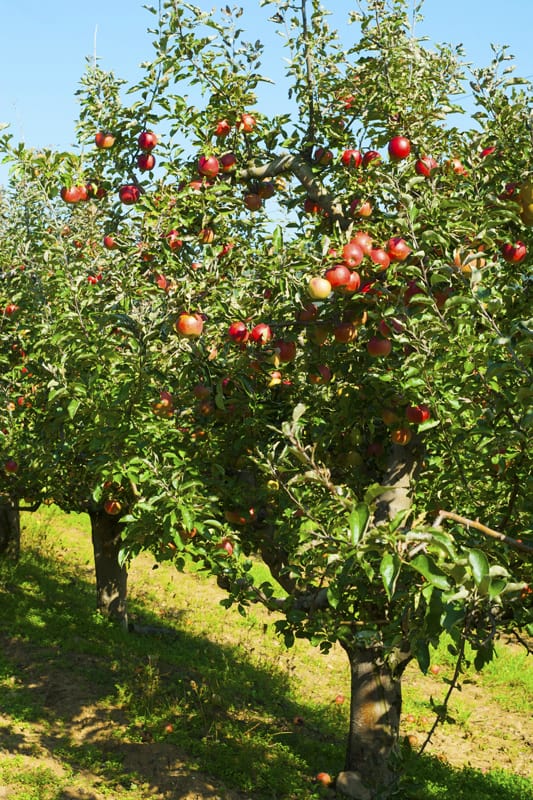Peach trees are known for their delectable fruit and gorgeous spring blossoms. However, you may be concerned if you notice your peach tree blooming in the fall. While it may seem uncommon, there are several reasons why it happens. What causes your peach tree to bloom in the fall? We did the research, and we'll explore those reasons and discuss what you can do to help your tree thrive.
Here are several factors that cause the peach tree to bloom in the fall:
- Pruning
- Weather conditions
- Water stress
- Tree age
- Over-fertilization
We'll dive deeper into the discussion and explore approaches for managing fall blooming in your peach trees. There are also other things to consider, how to care for the peach tree and overall tree health. If you're interested in learning more about these topics, keep reading!

What Causes Peach Trees To Bloom In The Fall?

Some fall blooming can be natural and harmless. You can enjoy the fall blossoms but avoid excessive blooming than normal as they could have negative outgrowths on the tree's overall health and productivity. Anything that can make the leaves fall earlier than usual can also result in this blooming out of season. Here are some possible causes:
Pruning
Pruning peach trees late in the growing season can encourage new growth and cause the tree to blossom in the fall. The peach tree responds to pruning by redirecting its resources toward growing new shoots and leaves. This new growth can trigger the tree to produce flowers, especially if the pruning is done later in the growing season.
Furthermore, pruning can increase the amount of sunlight and air circulation. As the sunlight reaches the remaining branches, this encourages flowering.
Weather Conditions
The month in which the peach tree will bloom varies on weather conditions and what variety you planted. Uncommon warm or cold weather conditions during the summer and early fall causes peach trees to blossom out of season.
Since the peach tree is a tropical plant, the warm temperatures in fall can deceive the tree into thinking it's time to bloom, while cold temperatures can harm the buds and cause them to flower prematurely.
Water Stress
When a peach tree undergoes deficiency, drought, or water stress, it enters a state of survival mode where it focuses its resources on producing before it dies. This tree's status can result in reproducing flowers and fruit out of season, including in the fall.
Tree Age
Young peach trees may grow a second set of flowers during the fall season as they establish themselves.
Over-Fertilization
Over-fertilization with nitrogen can cause peach trees to yield excessive vegetative growth, but no fruit is produced, which could lead to blooming in the fall.
How To Grow And Maintain Your Peach Tree

Caring for peach trees is necessary to ensure their health and productivity. Listed below are techniques that can help to prevent the tree from too much blooming in the fall so it blooms in the right season:
Planting
Choose a well-drained location with direct sun exposure to grow your peach tree. Avoid planting in areas with standing water or where peach trees have previously grown to reduce the risk of spreading disease.
Watering
Provide your peach tree with adequate water, especially during dry periods. A newly planted peach tree needs about 1 inch of water per week. Mature trees need about 2 inches of water per week during the growing season.
Fertilizing
Apply nitrogen fertilizer to your peach tree during the growing season to promote growth and fruit production. Use a balanced fertilizer with equal amounts of nitrogen, phosphorus, and potassium (NPK), such as a 10-10-10 or 16-16-16 fertilizer.
Nitrogen
Nitrogen is essential for peach trees because it promotes healthy foliage and fruit growth. Good sources of nitrogen include ammonium sulfate, urea, and calcium nitrate.
Phosphorus
Phosphorus helps boost strong root growth and is essential for overall tree health. Good sources of phosphorus include bone meal, superphosphate, and rock phosphate.
Potassium
Potassium helps control the water proportion in peach trees and elevates healthy fruit development. Good sources of potassium are potassium chloride, potassium sulfate, and wood ashes.
Pruning
Pruning your peach tree too aggressively or at the wrong time of year can impact blooming and fruit production. Adjust your pruning practices to encourage healthy growth.
Prune your peach tree annually to promote air circulation and sunlight penetration, which can help prevent disease and improve fruit quality. Remove dead or damaged wood and any dead branches that cross or rub against each other.
Pest and Disease Management
Monitor your peach tree for pests and diseases and take appropriate measures to prevent or control them. Common insects of peach trees include aphids, peach tree borers, and Japanese beetles, while common diseases include peach leaf curl and brown rot.
When Should You Plant Peach Tree?
The ideal time to plant peach trees is in the late winter or early spring before new growth begins. In warmer climates, planting is possible in the fall. The exact planting time may vary depending on the weather condition and region.
Why Peach Tree Has More Leaves And No Fruits?

There are several causes why a peach tree may have more leaves and no fruits:
- Immature peach trees may bear several years to produce fruit, and some varieties may need cross-pollination with another tree variety before fruit production.
- Pruning at the incorrect time can lower fruit production in peach trees. Prune the tree during the inactive season. Remove dead or diseased wood to improve air circulation and sunlight penetration.
- Lack of nutrients, particularly nitrogen, can cause a peach tree to grow more leaves and less fruit. Soil testing can support identifying any nutrient insufficiencies.
- Unpredictable or insufficient watering can impact fruit production in peach trees. Peach trees need regular deep watering, especially during hot and dry periods.
- Pests such as aphids, mites, and scale insects can harm peach trees and diminish fruit production. Diseases like peach leaf curl and brown rot can also impact fruit production.
- Frosting damage in winter or extreme temperatures during the bloom period can lower fruit production in peach trees.
Why Is Peach Tree Dying?
Here are some common reasons why peach trees may be dying, along with possible solutions:
Root Issues
Several factors cause peach trees to suffer from root damage, such as overwatering, drought, or soil compaction. Address the root cause of the problem to solve the issue.
Cut back on watering and make sure the soil has good drainage. You can also try aerating the soil around the tree to reduce compaction.
Pest And Disease
If pests or diseases are causing your peach tree to die, treat it with pesticides or fungicides, prune infected branches, or remove severely affected parts of the tree and dispose of them. It's also necessary to prevent future infestations by practicing reasonable tree care and sanitation.
Nutrient Deficiencies
If the peach tree lacks essential nutrients, such as nitrogen, phosphorus, or potassium, fertilize the tree to supply these nutrients. Follow recommended fertilization instructions and avoid over-fertilizing, which can also damage the tree.
You can use a soil tester to check which nutrients you need to feed your tree.
Click here to see this soil tester on Amazon.
Environmental Stress
If your peach tree is suffering from extreme temperatures, frost damage, or drought, resolve the problem by providing adequate water the tree needs and giving protection from the elements, such as mulching or insulating the tree trunk.
Click here to see this tree protection wraps on Amazon.
The crucial temperature for most peach tree varieties during the bloom period ranges from -15 degrees Fahrenheit and above, depending on the blossom stage. Anything lower than -25 degrees Fahrenheit could kill the tree. Temperatures at or below these thresholds can result in substantial crop damage or loss.
Wrong Variety
Planting the wrong peach tree variety inappropriate to your local climate will eventually kill the tree. The best solution may be to substitute it with a more appropriate variety. Consult with a local arborist or horticulturist to determine the best peach variety for your area.
Summary

We have discussed different topics related to peach trees, including why they bloom in the fall, how to care for them, and common reasons why they die. We hope you now see the importance of balanced and suitable fertilizer for your tree's needs.
For more information about how to care for your peach tree and other gardening topics, please visit our other posts:


